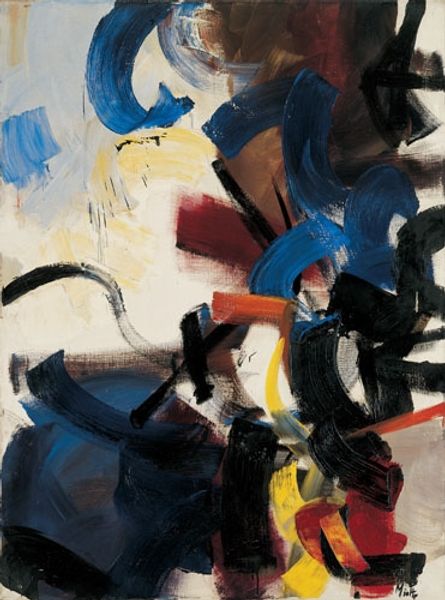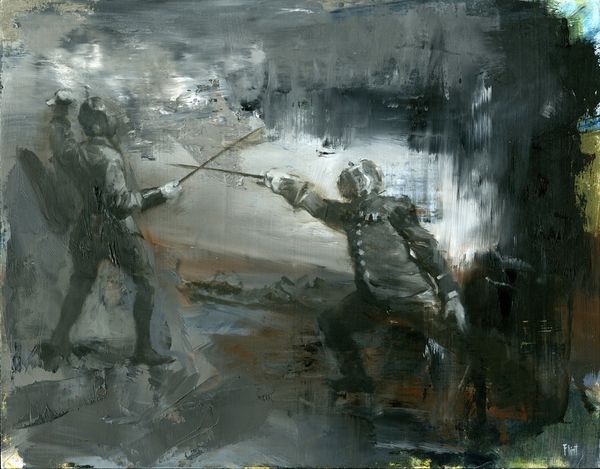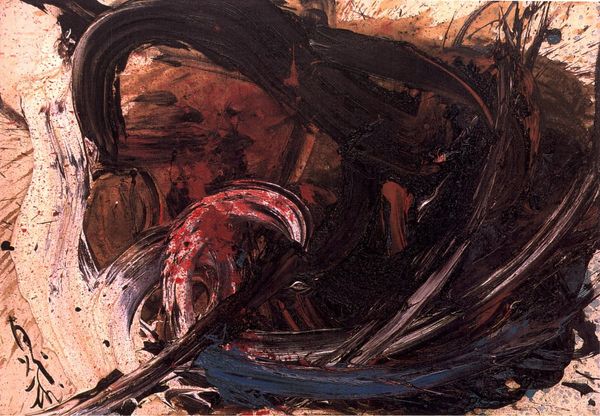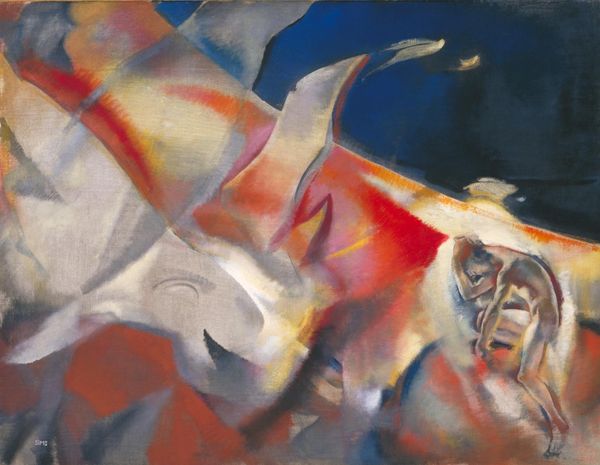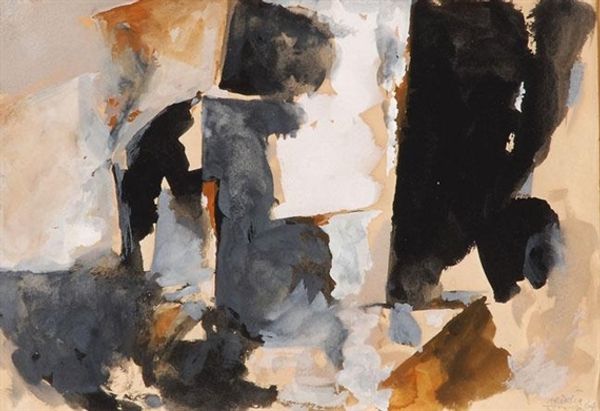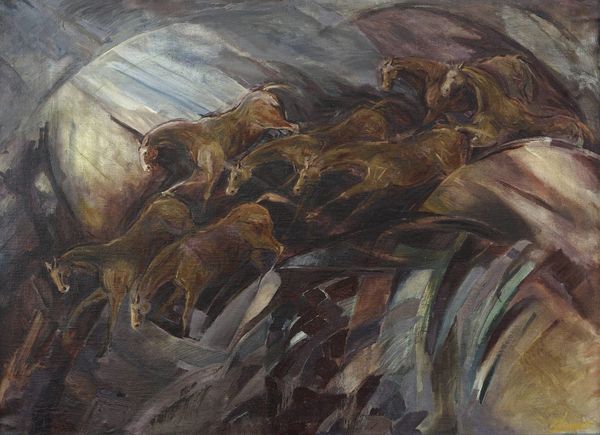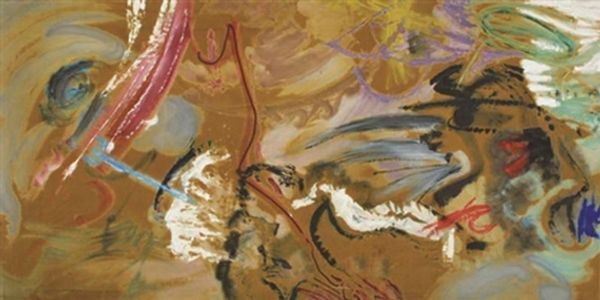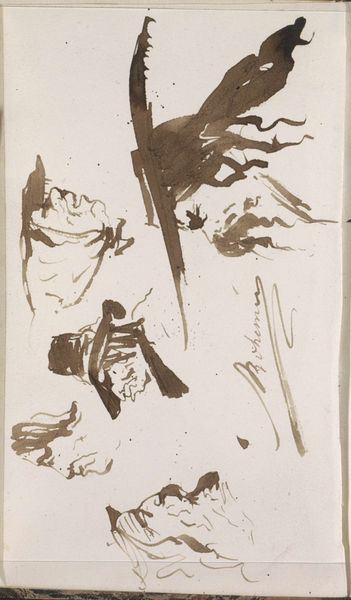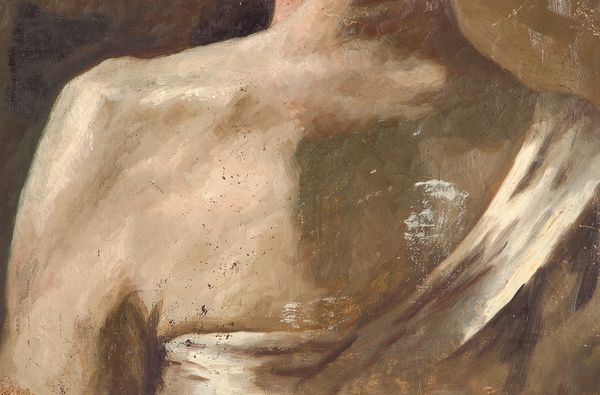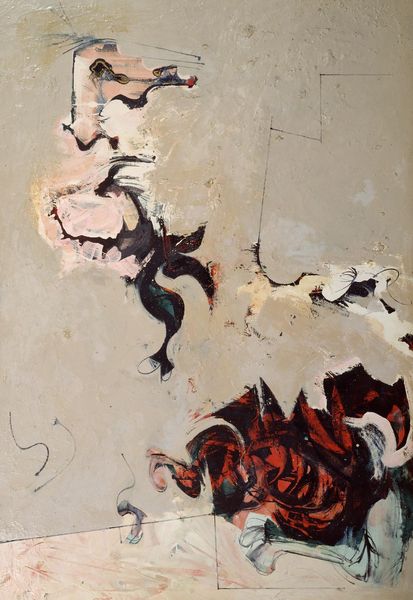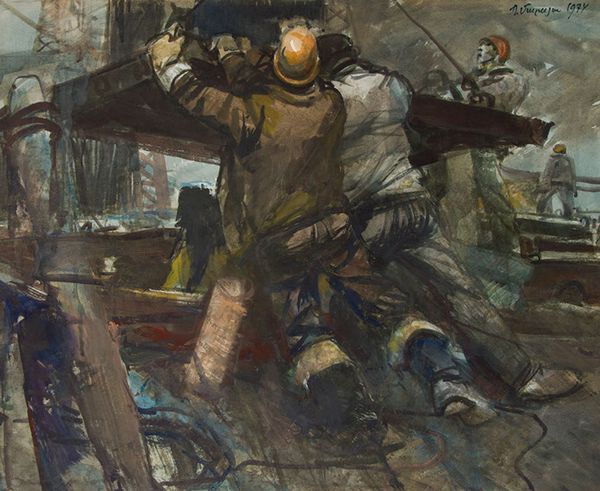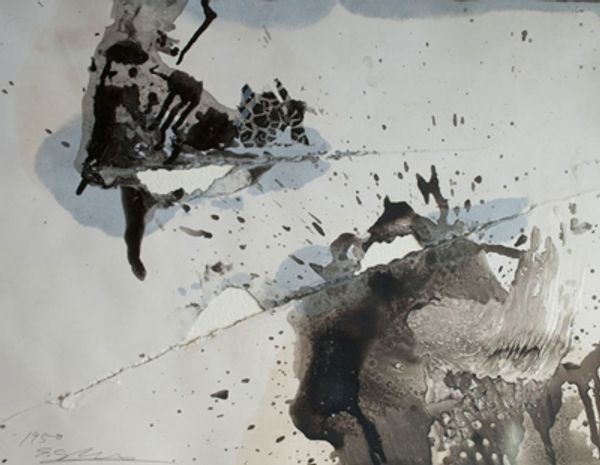
painting, watercolor
#
painting
#
figuration
#
oil painting
#
watercolor
#
expressionism
#
painting painterly
#
history-painting
Copyright: Public Domain: Artvee
Curator: Lovis Corinth created this artwork, "Ritterrüstung Und Schwert," which translates to "Knight's Armor and Sword" in 1918. It is primarily created with paint. Editor: Its somber palette certainly sets a melancholic mood. There is something about the deconstructed presentation of these symbols of martial power that feels distinctly funereal. Curator: I'd agree, there is an undeniable sense of dismantling—an abstract arrangement. The composition favors heavy blacks and muted grays, emphasizing shapes rather than detailed forms. Notice, too, how Corinth has applied watercolor washes. Editor: Absolutely, the visible brushwork speaks volumes about process. Knowing this was created towards the end of the First World War, one cannot ignore the obvious connotations of decay. Was the labor put into forging armor already becoming obsolete, being surpassed by mass production and impersonal technology in battle? Curator: A potent point, Editor! Let’s consider how Corinth handles positive and negative space to represent historical objects of power. It prompts reflection on their intrinsic value. Corinth destabilizes these symbols—do you not feel it prompts inquiry, and doubt about the certainties of history itself? Editor: Doubt, perhaps even condemnation of violence as state-sanctioned industry! This painterly style, it’s loose, expressionistic; not crafted like the precision of well-made steel armor, which suggests that the artist may intend an oppositional meaning through materials. Curator: Indeed. Through deconstruction and a deliberate crudeness, Corinth challenges valorizing representations and historical grandeur. Note also the interesting layering of shades around each area, how it all builds toward an image and statement. Editor: His process serves as its own stark visual commentary, highlighting labor and raising doubts around historical martial practices as barbaric—even futile. Thanks to the quick watercolor, Corinth renders the sword and armor still and dead, but alive with his mark. Curator: Thank you. In summary, we hope our brief reflection allows listeners to ponder on what it means to see martial symbols stripped of their authority. Editor: It offers room for considering how process becomes central to shaping our emotional, sociopolitical understanding of a given moment.
Comments
No comments
Be the first to comment and join the conversation on the ultimate creative platform.
